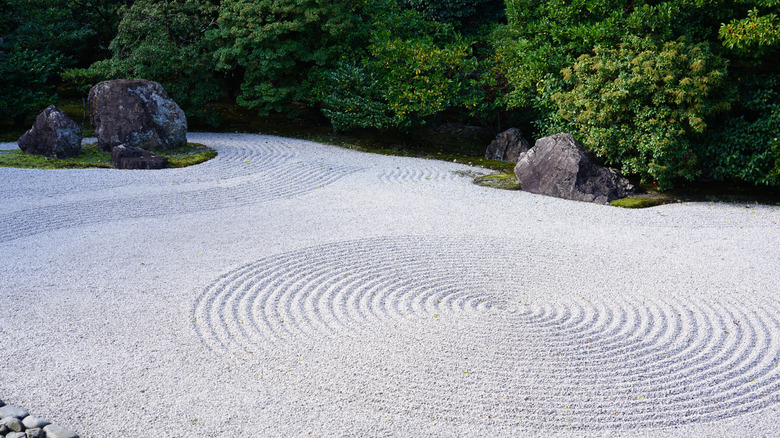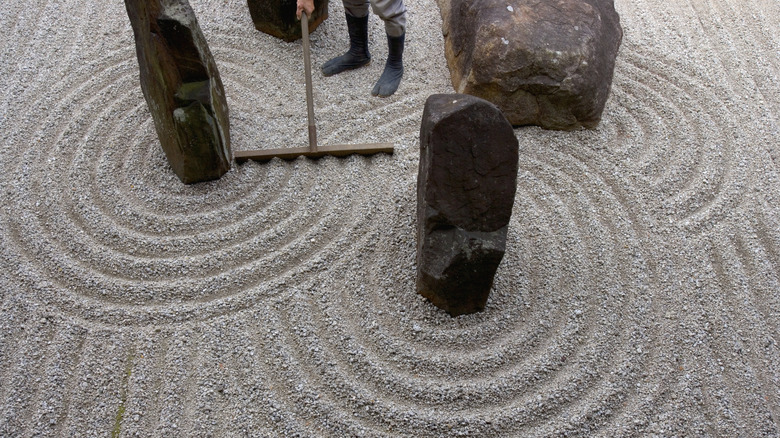The Best Gravel And Sand To Use To Build Your Zen Garden
Zen gardens were first created by Buddhist monks way back in the sixth century as a quiet space for meditation and contemplation. Many modern iterations of these types of gardens remain unchanged and follow the very same principles of Shakkei, which translates to "borrowed landscape" and entails recreating distant elements of the natural landscape, such as mountains and seas, in the garden's design. Zen gardens are also commonly referred to as "dry rock" gardens because they don't incorporate water. Instead, a mix of sand and gravel is a key component in a Japanese meditation garden that's meant to represent water, and is often raked to simulate the waves of the ocean.
So, if you're keen to build a relaxing and meditative Zen garden, you'll want to know the best type of gravel and sand to use. The ideal materials to use are decomposed or crushed granite, fine gravel, small pebbles, and silica sand. Another suitable material, often found at farm feed stores, is turkey or chicken grit.
How to select the perfect gravel or sand for your Zen garden
The first thing to consider when selecting the surfacing material is that it needs to be easy to rake and not so light that wind could blow it away. That's why fine gravels are preferred over something like beach sand. You also want the crushed rock pieces to be irregular in shape, since this irregularity helps the raked material hold its form when raked. Crushed or decomposed granite is ideal because it's available in a range of colors, which means you can select a shade to complement the other elements. White gravel is quite a popular choice, but it will reflect a good deal of glare if your garden is exposed to constant sunlight.
You could also use turkey, or chicken grit, which is basically just crushed granite. This type of aggregate is fine enough to hold raked patterns quite well. If your Zen garden is going to be in an enclosed courtyard that will be exposed to minimal wind disturbance, you could consider using silica sand instead. This lovely fine-grained sand lends itself beautifully to creating quite detailed raked forms. Once you've created your garden, make sure you rake the gravel or sand regularly, say once a week, to maintain its appeal. You can enhance the Zen ambience in your yard with a few simple elements, like well-placed rocks and boulders and clever planting. And since these manicured landscapes are meant to be viewed from the perimeter or another vantage point rather than explored, you might want to create small, peaceful seating spaces in your garden as well.

